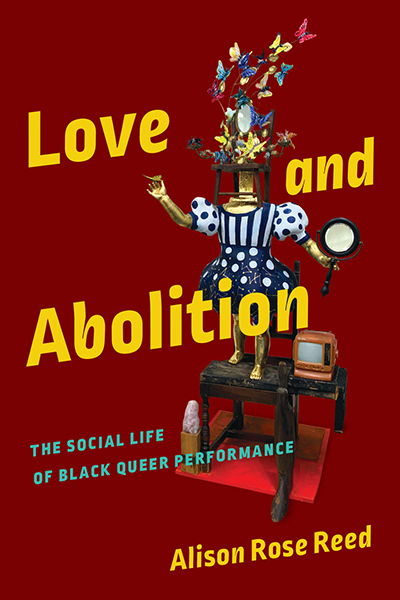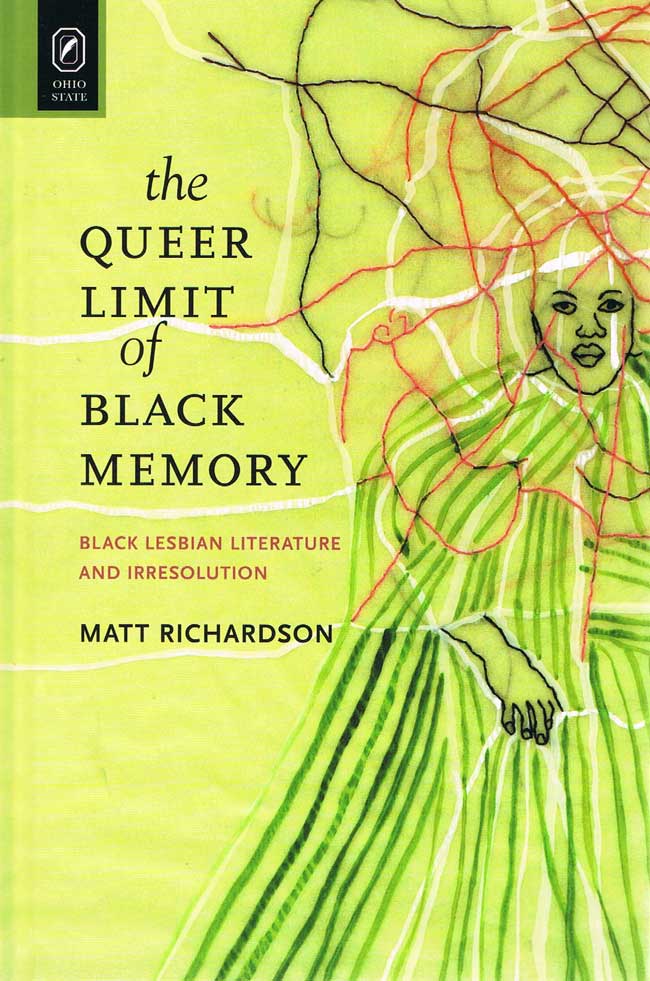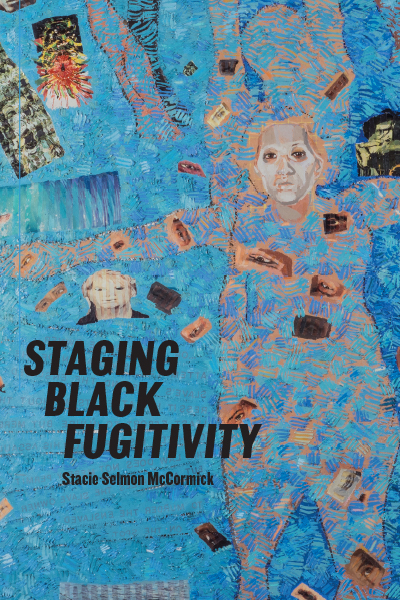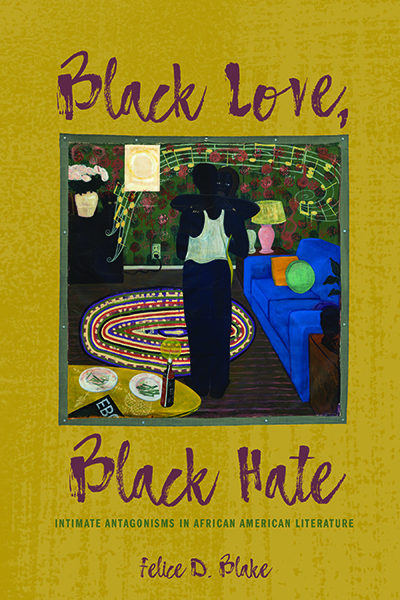“Love and Abolition is a vital contribution to the academic terrain of queer theory and intersectional studies. Alison Rose Reed's innovative blend of theory and personal accounts celebrates the radical potential of love and advances our understanding of queer relationships as sites of resistance and transformative action. Scholars, activists, and readers seeking to deepen their understanding of the complex dynamics between love and abolition will find this book invaluable.” —Matt Richardson, GLQ: A Journal of Lesbian and Gay Studies
“One of the contributions Love and Abolition makes to scholarship and activism are the countless moments when Reed’s more polemical argumentation and analysis provoke new opportunities for research and thought. … Like all great manifestos, Reed’s provocations open up new worlds for thought and action. At the same time, her analysis of affect and abolition offer urgent and necessary interventions to feminist studies, queer studies, and Black studies.” —Stephen Dillon, The Journal of African American History
“With her deep investigation into the historical and present-day manifestations of abolition, together with her incisive analysis of Black queer performance’s rootedness in social transformation and careful attention to embodiment, Alison Rose Reed makes clear the specific ways that Black queer art invests in love as an abolitionist practice. She has done a great service for all of us who believe in the freedom strokes necessary—and available—in the here and now.” —Omi Osun Joni L. Jones, author of Theatrical Jazz: Performance, Àṣẹ, and the Power of the Present Moment
“Taking its cues from ‘queer networks of creative solidarity,’ Love and Abolition stages a valuable dialogue between performance studies and abolitionist scholarship. Reed puts forward an interpretive framework for engaging how radical practices of care shape and are shaped by Black radical traditions of both conflict and collaboration.” —Felice D. Blake, author of Black Love, Black Hate: Intimate Antagonisms in African American Literature
“Passionately argued, Love and Abolition is a compelling exploration of the power of Black queer performances to forge affective landscapes that rebel against carceral psychology, while inspiring new ways of being in and for the world. Performance, in this project, is a domain in which the impossible and the unthinkable become tangible and doable. More than rehearsing tough and tender love, it makes it in the here and now of an urgently abolitionist present.” —Joshua Chambers-Letson, author of After the Party: A Manifesto for Queer of Color Life
In Love and Abolition, Alison Rose Reed traces how the social life of Black queer performance from the 1960s to the present animates the unfinished work of abolition. She grounds social justice–oriented reading and activist practices specifically in the movement to abolish the prison industrial complex, with far-reaching implications for how we understand affective response as a mobilizing force for revolutionary change.
Reed identifies abolition literature as an emergent field of inquiry that emphasizes social relationships in the ongoing struggle to dismantle systems of coercion, criminalization, and control. Focusing on love as an affective modality and organizing tool rooted in the Black radical tradition’s insistence on collective sociality amidst unrelenting state violence, Reed provides fresh readings of visionaries such as James Baldwin, Ntozake Shange, Sharon Bridgforth, and vanessa german. Both abolitionist manifesto and examination of how Black queer performance offers affective modulations of tough and tender love, Love and Abolition ultimately calls for a critical reconsideration of the genre of prison literature—and the role of the humanities—during an age of mass incarceration.

Alison Rose Reed is Associate Professor of English at Old Dominion University.
Contents
List of Illustrations
Acknowledgments
Prologue Abolition (Is) Now!
Introduction Abolition Literature: Calling on Tough and Tender Love
Chapter 1 Listening for Emmett Till: James Baldwin, Laurie Carlos, and Black Love as Survival
Chapter 2 Transforming Harm into Healing: Ntozake Shange and the Combahee River Collective
Chapter 3 Concrete Utopias: Activating Spirit in the Performance Worlds of Sharon Bridgforth and Josefina Báez
Chapter 4 Love in the Streets: Stephanie Leigh Batiste, vanessa german, and Vigils for State Violence
Chapter 5 Contraband Love: Humanities Behind Bars and Abolition Pedagogy
Epilogue Abolition as Renegade Presence
Appendix Abolitionist Resources
Bibliography
Index
These images also appear in the book in black and white.
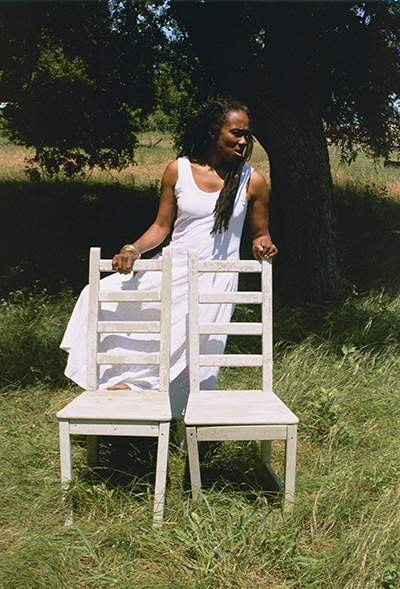
Figure 1. Omi Osun Joni L. Jones on the set of “The love conjure/blues Text Installation-Altar Film.” Photograph by Wura-Natasha Ogunji and digital editing by Jendog Lonewolf. Image courtesy of Sharon Bridgforth.
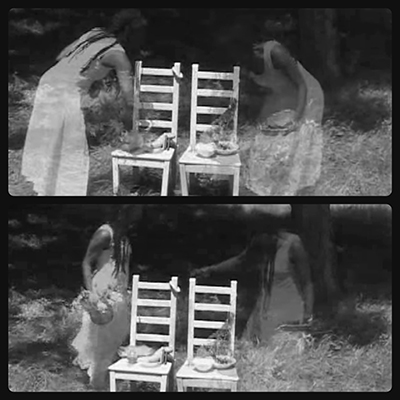
Figure 2. Two juxtaposed screenshots of Omi Osun Joni L. Jones in “The love conjure/blues Text Installation-Altar Film.” Image used with permission of Sharon Bridgforth.
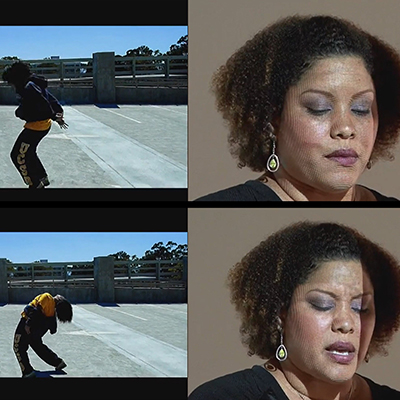
Figure 3. Two juxtaposed screenshots from Stacks of Obits performance in Germany. Batiste performs alongside video of UC Santa Barbara student krump dancers, here, Miriam “Ace” Burnett. Image used with permission of Stephanie Leigh Batiste.
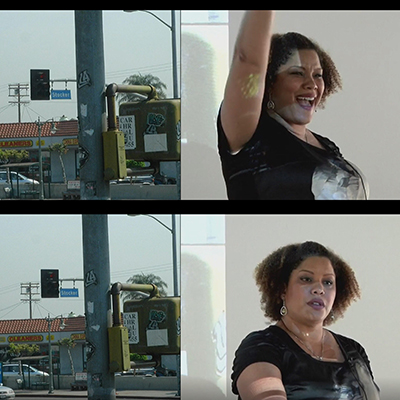
Figure 4. Two juxtaposed screenshots from Stacks of Obits performance in Germany. The slideshow to Batiste’s left returns to this snapshot of a Stocker Street intersection. Photographs of Los Angeles by Stephanie Leigh Batiste. Image used with permission of Batiste.
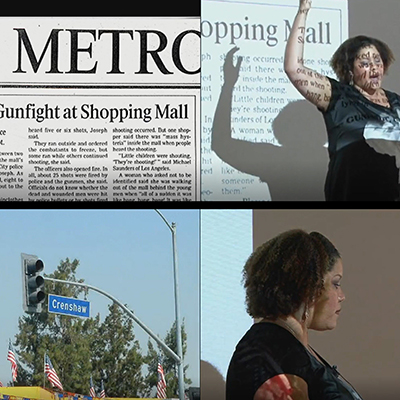
Figure 5.Two juxtaposed screenshots from Stacks of Obits performance in Germany. Slides including archival material and photographs of Los Angeles by Stephanie Leigh Batiste. Image used with permission of Batiste.
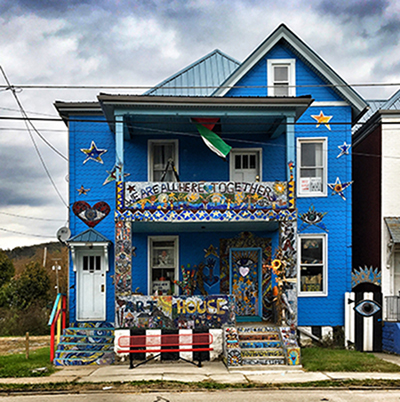
Figure 6. ARThouse, Homewood, PA. Image courtesy of vanessa german.
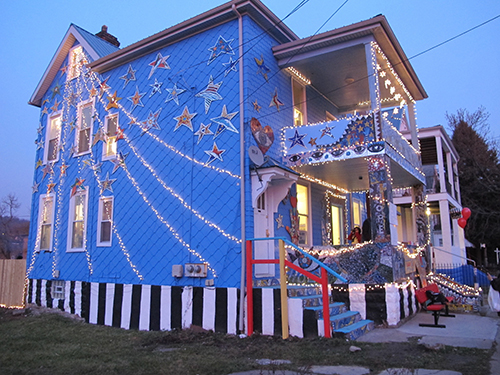
Figure 7. “Night of Illumination for Orlando.” Photograph by Erika Beras. Image used with permission of vanessa german and Erika Beras.


